Discover the Benefits of Telephoto Lenses for Landscapes
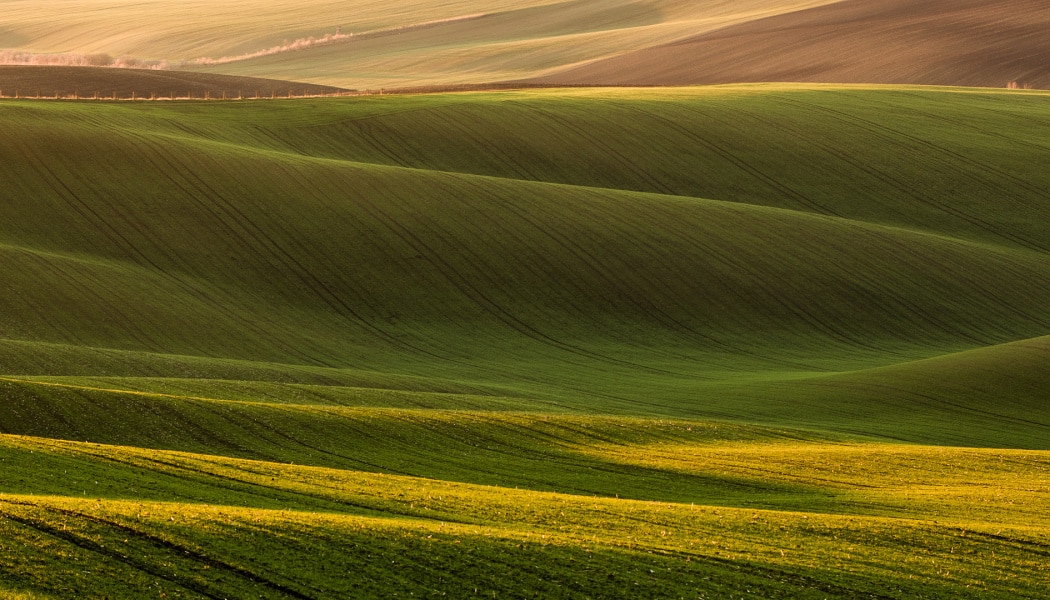
You don’t have to stick to just wide-angle lenses for your photo safaris. There are many ways get impressive pictures out of a telephoto lens. Even when you’re photographing landscapes.
There’s no precise definition for what range of lengths can still be called a long lens. But at the low end you can find 65 and 100 mm lengths (full-frame equivalent), with everything higher being considered a long lens. Lenses with lengths like these are called telephoto lenses.
Until, that is, you reach extreme lengths of 300 mm or more—then they’re called super telephoto lenses. Other telephotos with lower focal lengths are sometimes termed medium telephoto lenses.
Choosing Your Details
The point of using a telephoto lens is to be able to pick a small crop out of a scene. What your eyes see as a mere detail feels more monumental when it’s covering the whole frame.
The picture series below gives an example of enlarging a detail like this. First here’s the telephoto shot itself:

Canon 5D Mark IV, Canon EF 70-200/2.8 IS II, 1/20 s, f/9.0, ISO 200, focal length 200 mm
The second shot shows the whole scene around me. To see for yourself how small a spot the picture above shows, take a look at this second picture:
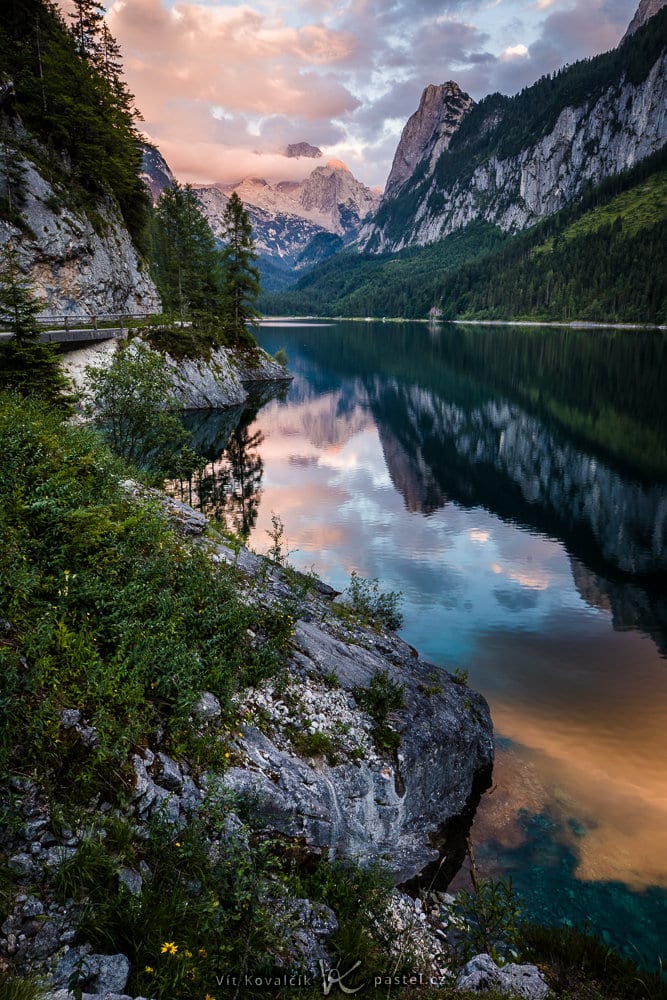
Canon 5D Mark IV, Canon EF 16-35/2.8 III, 1/6 s, f/13, ISO 200, focal length 24 mm
Mountainous layers disappearing into the distance are also a favorite:
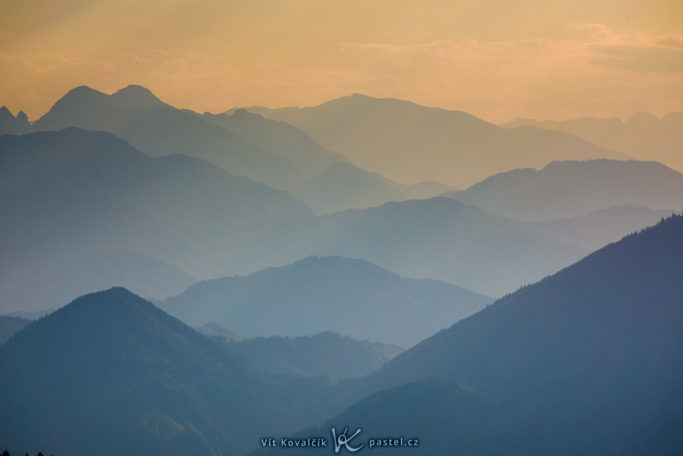
Canon 5D Mark IV, Canon EF 70-300/4-5.6 IS, 1/100 s, f/11, ISO 100, focal length 240 mm
However, this shot is again only a small detail out of the whole area, and you could easily miss it on a hike:
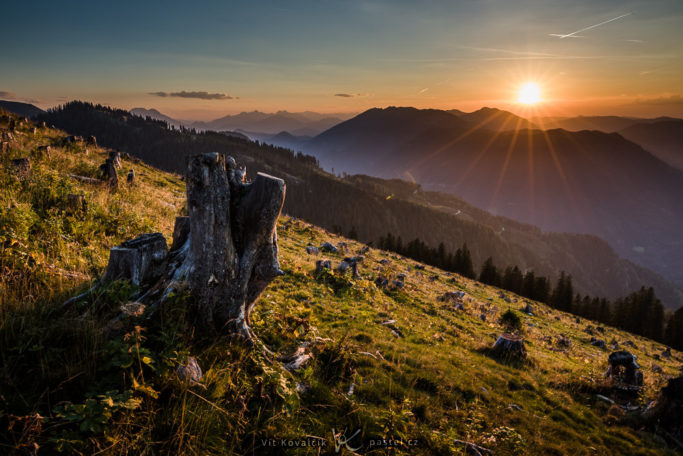
Canon 5D Mark IV, Canon EF 16-35/2.8 III, 1/40 s, f/14, ISO 100, focal length 24 mm
As usual for telephoto lenses, there’s some perspective compression. That means that the mountains are shown as very close to each other, even though in reality each layer may even be miles from the next.
Leave Distractions Out
Your pictures become more impressive when you think about your composition and then leave out every distraction. Here again I’ll illustrate the difference with a pair of representative shots.
They both used a 300 mm lens, but one of them was then also cropped. It gives the impression that the little chapel is somewhere among vast green plains. And the only reason why is that you can’t see out to where the distracting paths, bushes, and groves are.
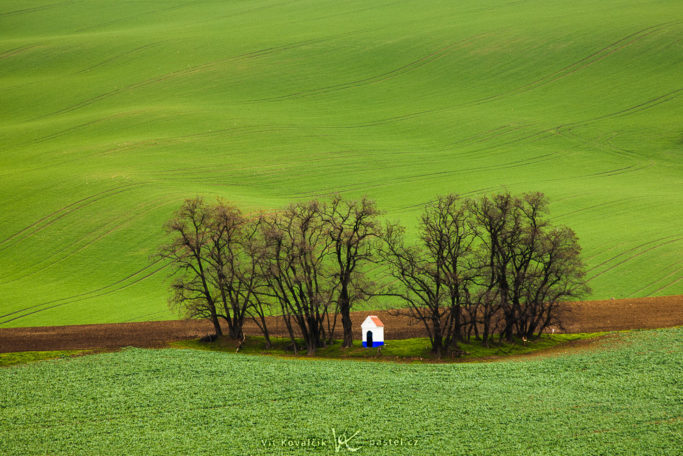
Canon 5D Mark IV, Canon EF 70-300/4-5.6 IS, 1/6 s, f/10, ISO 100, focal length 300 mm
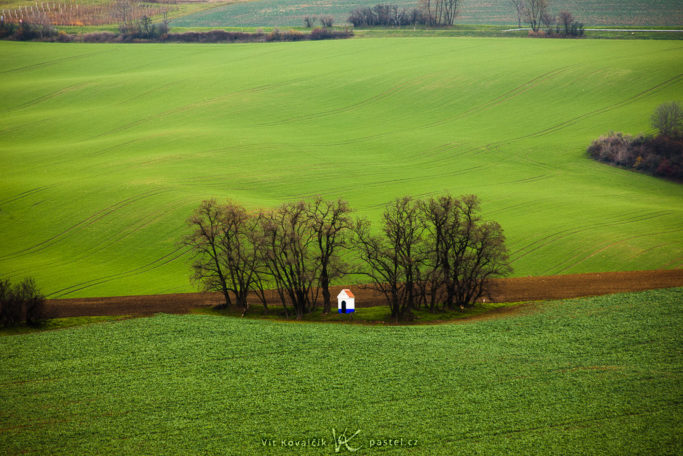
Canon 5D Mark IV, Canon EF 70-300/4-5.6 IS, 1/6 s, f/10, ISO 100, focal length 300 mm
Even when photographing faraway objects, you can change composition by changing your position. Below is an alternative view from a spot about 300 meters farther away (the chapel is about 600 meters away, and the forest is another 700 meters behind it).
This composition isn’t bad, but here no minor crop can get rid of the forest in the background. So it’s best to also think about where you’ll stand to take your shot.
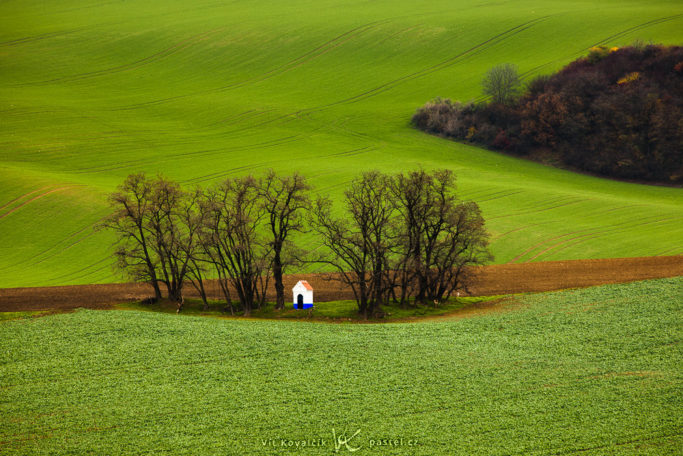
Canon 5D Mark IV, Canon EF 70-300/4-5.6 IS, 1/6 s, f/10, ISO 100, focal length 300 mm
With or Without the Sky
As you could see in the previous photos, your telephoto shots can, yet don’t have to, include the sky. With wide-angle lenses it’s relatively hard to completely exclude the sky, unless you’re taking pictures in the forest or up close.
Meanwhile with telephoto lenses, getting a skyless crop is easy. Frequently it’s also good training for photographing lines and other basically geometric shapes.
Both the landscape itself—often in cooperation with the sun and the shadows it throws—and human impacts on it create suitable shapes for this training. On the fields and vineyards, for example.
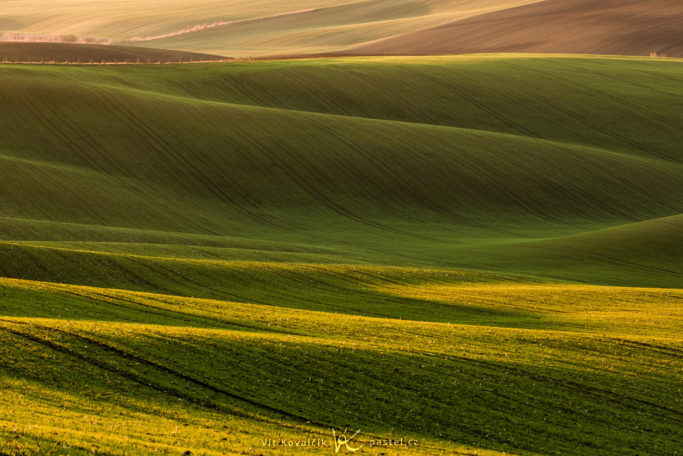
Canon 5D Mark IV, Canon EF 70-200/2.8 IS II + 2x Extender III, 1/40 s, f/10, ISO 100, focal length 170 mm
The Human Footprint
It’s better to avoid electrical poles, etc. when you’re photographing landscapes. Except when it’s not. If you find a way to incorporate them into a picture, then don’t be afraid of them.

Canon 5D Mark IV, Canon EF 70-300/4-5.6 IS, 1/50 s, f/14, ISO 100, focal length 150 mm
If a purely “technical” landscape attracts you, then you can go this route too.

Canon 5D Mark IV, Canon EF 70-200/2.8 IS II, 1/160 s, f/11, ISO 100, focal length 120 mm
But that’s an urban landscape; moving back to the wilds, you can also find a photogenic human footprint in large structures like ruins or old farmhouses, which you can as usual supplement with a background of your choice. I recommend using Google Earth to get an idea of your shot site’s surroundings.
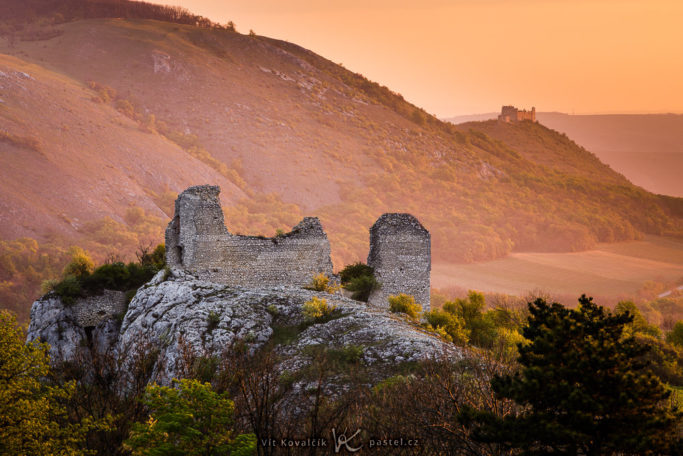
Canon 5D Mark IV, Canon EF 70-200/2.8 IS II, 0.4 s, f/14, ISO 100, focal length 200 mm
A Telephoto Lens Will Help You Catch Wild Game
If you have a telephoto lens ready, it pays to keep an eye out for any game animals wandering the landscape, or any you’ve flushed out. Of course this is easier if you’re off the beaten track. Or if you’re on the beaten track at a time when nobody else wants to go there.
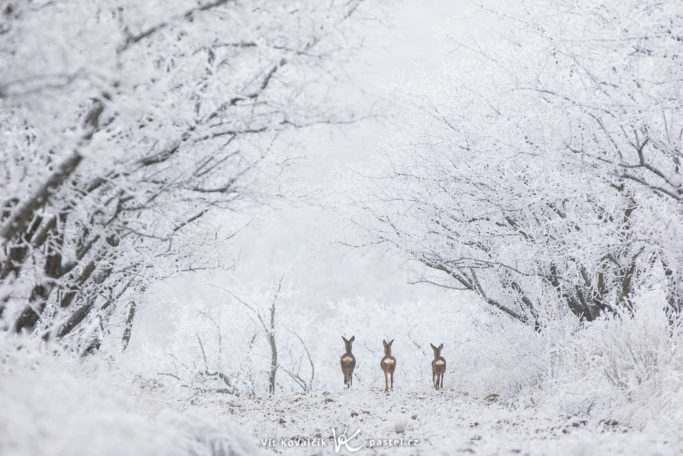
Canon 5D Mark IV, Canon EF 70-200/2.8 IS II + 2x Extender III, 1/320 s, f/8, ISO 500, focal length 400 mm
Animals can notice you from even the next hill over, giving you just seconds to react. So it pays to take several shots. Then you can calmly choose the best one at home. Sometimes you can also predict animals’ motion and focus in advance on the spot where they’re headed.
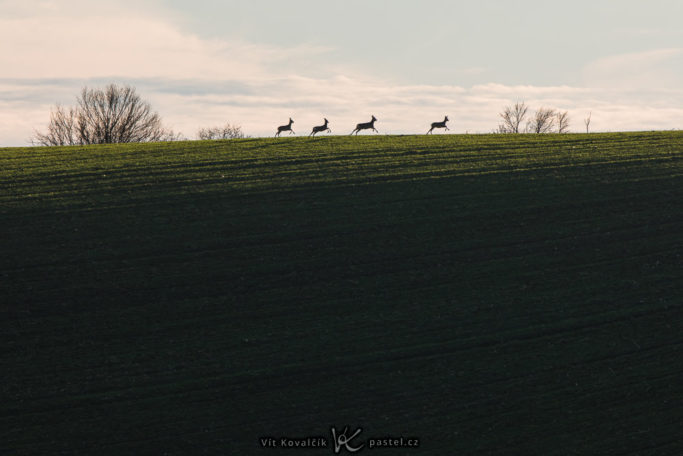
Canon 5D Mark IV, Canon EF 70-200/2.8 IS II + 2x Extender III, 1/320 s, f/10, ISO 200, focal length 400 mm
Birds and other flying animals are only partially predictable. But here again they can spice up a picture. Sometimes all you need is some patience.
The following photo shows an isolated church on a tiny island in the middle of a reservoir. I got the ducks on the water by standing in the right spot, and to get the ducks in the air, I just needed to wait a bit. But they were usually flying in other directions. So I had to wait for 10 minutes overall.
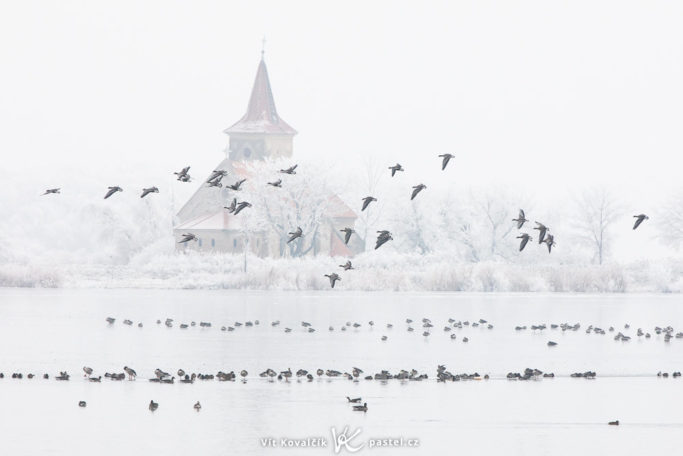
Canon 5D Mark IV, Canon EF 70-200/2.8 IS II + 2x Extender III, 1/320 s, f/10, ISO 800, focal length 400 mm
Heading Out For Landscapes? Head Out With a Telephoto Lens!
Whenever I head out for nature photography, I take both an ultra-wide lens and some kind of telephoto with me (I don’t have medium lenses). They’re each irreplaceable in their own way. A telephoto lens doesn’t demand a perfect scene everywhere around. If at least some small element looks interesting, that can be turned into a great picture.
So work with a long lens supports you in seeking and solving compositions in your head. You’ll above all be rewarded when you visit lookout towers and other high places, where a telephoto will make you feel like you’re at a candy shop. You just have to pick out and photograph details around you, and then you can enjoy them at home as well.